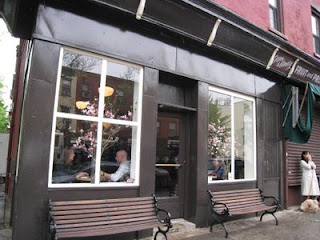SEATTLE, Washington - I now have several people from the Old Country linked up to me in Facebook. I get to see how they write. I also see how the people linked to them write. I also see the writing of people who, like me, have left the area.
This seems to be a fair summary:
- From South Jersey, still living there: semi-literate at best
- From South Jersey, moved to Florida: semi-literate at best
- From South Jersey, moved to [anywhere but Florida]: often literate
I've been bashing anyone younger than John Wooden who moves to Florida for a long time. The people just staying in Jersey.... what can I say. It's probably not fair for me to make these judgments based on brief online writings, but it's just brutal stuff.
There are many possible theories. Could be that the ones who stay where they're born are by definition the dopes. Or maybe there's some environmental factor sapping writing competence out of the people. Or, these people can all form a written sentence perfectly well but choose not to do so on Facebook (but the refugees typically DO write well there).
There could be another angle, the when-I-was-your-age angle. Maybe the schooling just sucks lately. Case in point: my mother, who finished her schooling by graduating high school circa 1960 and has never had a job that involved writing at all.
Six or eight years ago, she briefly got email access at a job she had. So I sent her an email to see her response. I had never seen a written paragraph from her in my life. Many times in the last 15 years, I've seen the emails of people not used to writing, seen the creaky language, brutal capitalization, etc. I was expecting the worst from her.
Well, her email was flawless. Full lush sentences, everything capitalized correctly, none of the common bumblings (its vs. it's, etc.) I could barely believe it. If you had told me it was written by Lionel Trilling, I might have believed you.
I don't have the email any more, it was sent to a work account at an old job. But that writing simply would not fly on today's South Jersey internet.









